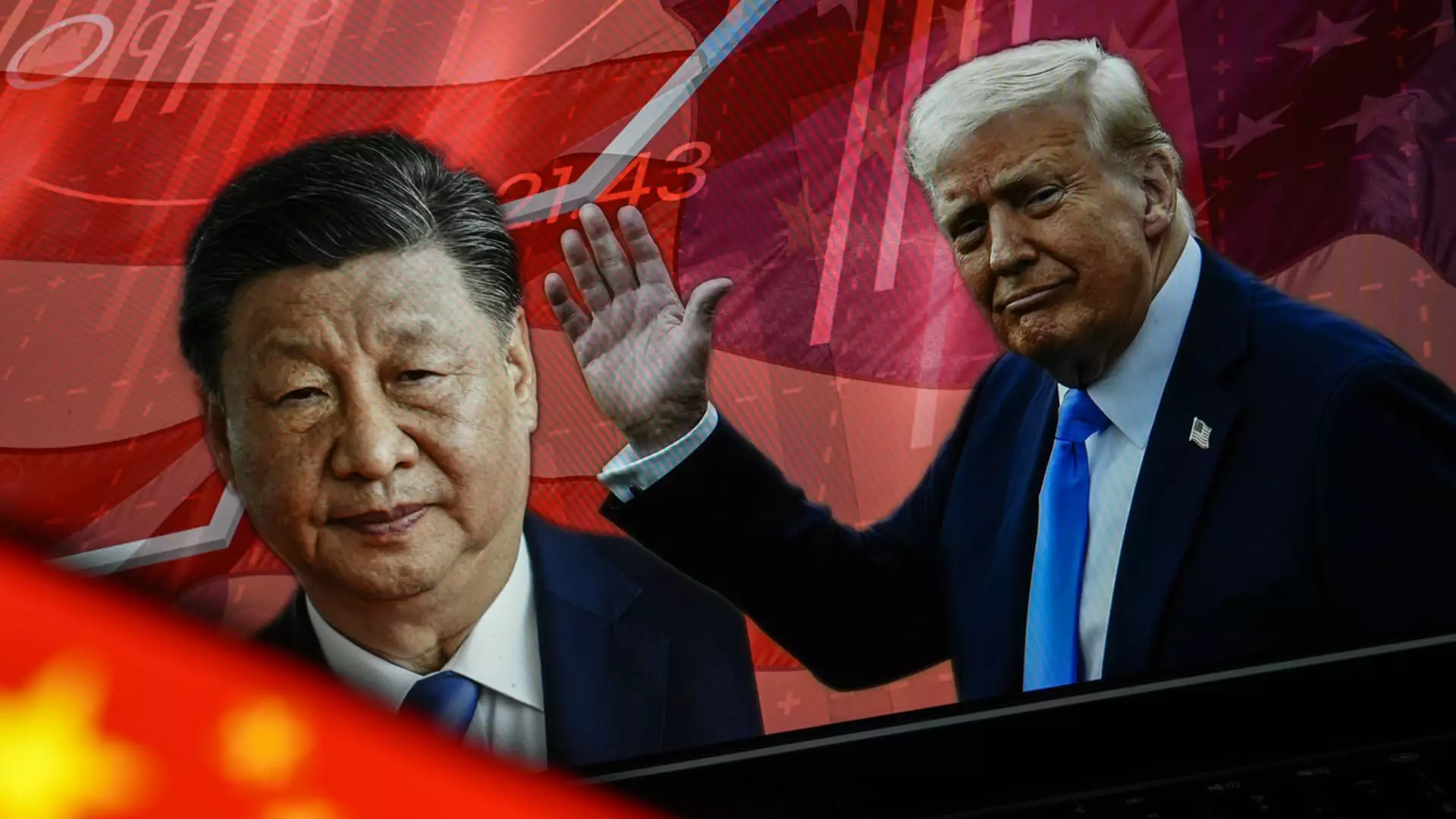In a bold proclamation last week, China declared it had reached its limit regarding retaliation against U.S. tariffs imposed by President Donald Trump. Characterizing any further U.S. tax hikes as nothing more than a “joke,” China has chosen to redirect its strategy, targeting not only goods but also the crucial services sector that has been a significant source of profit for American companies. This tactic represents a shift in China’s approach, revealing a multi-faceted strategy that indicates both frustration and a desire to exert pressure on the United States. While tariffs have dominated the headlines, it is essential to understand the profound implications of these non-tariff measures that are beginning to emerge.
Trump’s Tariff Tactics: A Double-Edged Sword
Trump’s administration has surged tariffs on select Chinese goods by as much as 245%. His fixation on quantitative measures stemming from tariffs seems myopic, particularly when considering that China has had its share of retaliatory responses, including imposing duties on U.S. imports of up to 125%. Yet, this tit-for-tat dynamic appears to be evolving. The narrative is shifting from a numbers game based solely on goods to a broader spectrum of economic relations—a shift that is both calculated and fraught with risks. The U.S.’s aggressive tariff stance may serve to galvanize domestic support in the short term, but it also risks alienating a formidable economic partner.
Targeting the Heart of U.S. Services
In a stark departure from the traditional focus on trade in goods, China has started to set its sights on the American services industry, targeting sectors crucial to the U.S. economy. By imposing measures against U.S. legal, consulting, and financial firms, China aims to disrupt an area where the U.S. has enjoyed a favorable balance of trade. Importantly, this includes putting significant players like DuPont and Google under scrutiny through antitrust probes. The implications of these actions also extend to the education sector, where the influx of Chinese students has become a vital revenue stream for American universities. China’s steps to reduce U.S. film imports and caution its citizens against travel or study in America signal that they are not only playing the short game but strategizing for long-term impacts.
The Ripple Effects: More Than Just Economic Loss
While the immediate financial implications of these moves can be calculated, the reputational damage within the U.S. could be profound. Analysts have indicated that fewer Chinese tourists and students could lead to broader repercussions in academia and tech innovation, as interactions and exchanges between cultures diminish. The potential loss of approximately $24 billion due to restricted travel volumes might just be the tip of the iceberg. With Chinese citizens becoming increasingly wary of U.S. technology and education, this could lead to a chilling effect on collaboration that supports not only economic growth but also mutual understanding.
The Risks of Deep Decoupling
The ongoing trade conflict is not merely a financial spat; it signifies deeper systemic divergences in how the two largest world economies view each other. Analysts warn of the possible decoupling of the two economies, with both sides increasingly adopting protective measures and fostering insularity. Such an environment threatens not just the industries strengthened through healthy competition but also the very fabric of global trade, characterized by interconnectedness and synergies. The specter of reduced intellectual and cultural exchange raises concerns about the long-term ramifications for both nations.
The Path Forward: Unobstructed Negotiations?
While both nations appear to be entrenching themselves in their respective positions, the reality is that both economies are interdependent. The potential for negotiation is clouded by belligerent rhetoric, but it remains a crucial next step for both Beijing and Washington. The stakes are high, not just for policymakers but for businesses and individuals caught in the crossfire. Economists emphasize the need for dialogues to be predicated on equal footing—both political and economic stature must be respected. This conflict cannot be resolved through continued escalation alone but rather through understanding and negotiation, allowing both sides to navigate the increasingly complex web of global commerce.
The coming months will be pivotal, as both countries continue to test the boundaries of their strategies. How this will unfold raises urgent questions for global markets, workplaces, and increasingly polarized societies. The battles fought within the confines of boardrooms and trade negotiations are vital to shaping our economic landscape for generations to come.

Leave a Reply